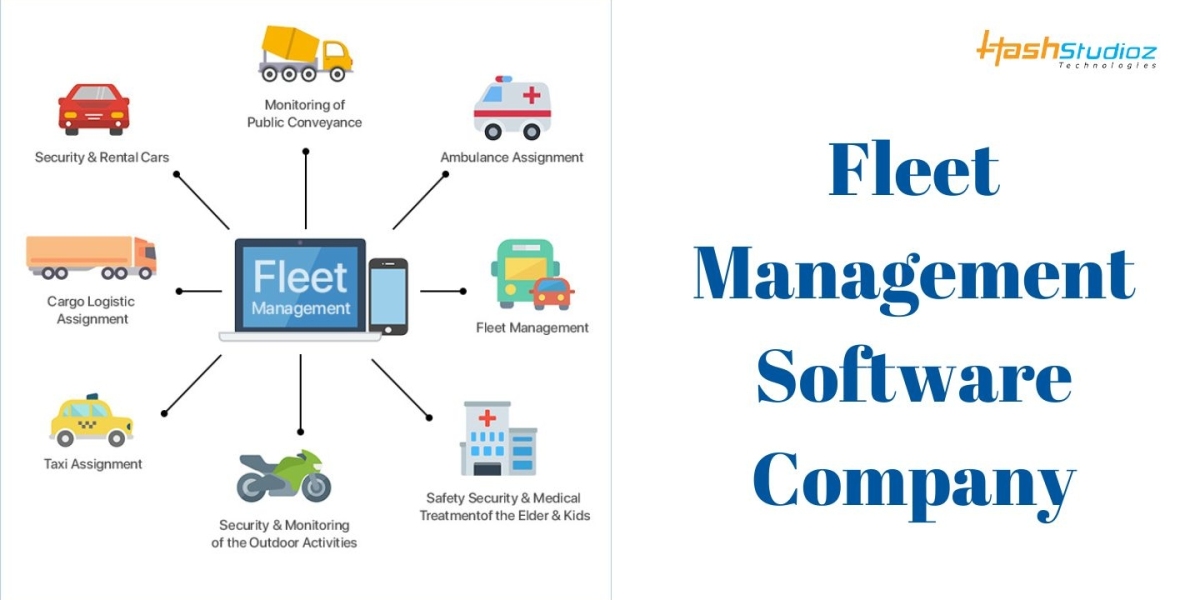Technology is a key factor in the dynamic logistics landscape that continuously shapes the sector. Fleet management software is one of the numerous technology innovations that has changed the game by providing unmatched control, efficiency, and transparency in the administration of transportation fleets. This essay examines the future of logistics while highlighting and analyzing the contributions and innovations of the fleet management software pioneers.
I. Evolution of Fleet Management Software:
A. Historical Overview:
The roots of fleet management software can be traced back to the late 20th century, where rudimentary systems focused on basic tracking and data recording. As technology advanced, so did these solutions, transforming into comprehensive platforms that now play a pivotal role in optimizing fleet operations.
B. Integration of IoT and Telematics:
One of the key advancements in fleet management software is the seamless integration of Internet of Things (IoT) and telematics. These technologies enable real-time monitoring of vehicles, providing valuable data on location, speed, fuel consumption, and vehicle health. This data serves as the bedrock for informed decision-making.
II. Key Features Shaping the Future:
A. Predictive Analytics:
Leading fleet management software providers are incorporating predictive analytics to anticipate maintenance needs, optimize routes, and enhance fuel efficiency. This feature not only minimizes downtime but also contributes to cost savings and sustainability.
B. Artificial Intelligence and Machine Learning:
The integration of Artificial Intelligence (AI) and Machine Learning (ML) algorithms empowers fleet management software to learn and adapt over time. These technologies enhance route planning, driver behavior analysis, and even accident prediction, ushering in a new era of intelligent logistics.
III. Environmental Sustainability and Compliance:
A. Emission Tracking and Reduction:
Modern fleet management software doesn't just focus on operational efficiency; it also addresses environmental concerns. Emission tracking modules enable companies to monitor and reduce their carbon footprint, aligning with global efforts towards sustainability.
B. Regulatory Compliance:
The complexity of transportation regulations demands sophisticated solutions. Pioneering fleet management software ensures compliance with diverse regulations, from hours of service (HOS) to vehicle maintenance requirements, reducing legal risks for businesses.
IV. User-Friendly Interfaces and Mobile Applications:
A. Intuitive Dashboard Design:
User interfaces have evolved to become more intuitive and user-friendly. Intuitive dashboards provide a comprehensive view of fleet operations at a glance, enabling quick decision-making by fleet managers.
B. Mobile Applications for On-the-Go Management:
Mobile applications have become an integral part of fleet management, allowing managers to monitor and control operations from anywhere. This real-time connectivity enhances responsiveness and overall operational agility.
V. Security and Data Privacy:
A. Cybersecurity Measures:
As fleet management software becomes more interconnected, the risk of cybersecurity threats increases. Pioneers in the industry are investing heavily in robust cybersecurity measures to protect sensitive data and ensure the integrity of their systems.
B. Compliance with Data Privacy Regulations:
In an era where data privacy is paramount, leading fleet management software providers prioritize compliance with data protection regulations such as GDPR. This ensures that the collection and use of data are ethical and transparent.
VI. Challenges and Future Outlook:
A. Connectivity and Integration Challenges:
Despite the advancements, challenges such as connectivity issues and integration complexities persist. Pioneers in fleet management software are actively addressing these challenges to ensure seamless operations.
B. Future Trends and Innovations:
The future of fleet management software holds exciting possibilities, including the integration of blockchain for enhanced security, the rise of autonomous vehicle management, and the continued refinement of AI-driven predictive analytics.
VII. Collaborative Ecosystems and Industry Partnerships:
A. Open APIs and Interoperability:
To address the connectivity challenges, industry pioneers are embracing open Application Programming Interfaces (APIs) and interoperability standards. This approach allows seamless communication between different systems and facilitates a more collaborative ecosystem within the logistics industry.
B. Industry Partnerships for Holistic Solutions:
Recognizing the multifaceted nature of logistics, leading fleet management software providers are forming strategic partnerships with other industry leaders. These collaborations aim to offer holistic solutions that encompass not only fleet management but also warehousing, inventory management, and supply chain optimization.
VIII. Training and Skill Development:
A. Human Element in a Digital World:
While fleet management software automates many processes, the human element remains crucial. Pioneering companies are investing in training programs to ensure that fleet managers and operators have the skills needed to harness the full potential of these advanced technologies.
B. Upskilling for Technological Proficiency:
Upskilling programs focus on developing proficiency in utilizing and interpreting the data provided by fleet management software. This ensures that the workforce is not only comfortable with the technology but can also leverage it to make informed decisions for optimal fleet performance.
IX. Global Adoption and Market Trends:
A. Rise of Cloud-Based Solutions:
Cloud-based fleet management solutions are gaining traction globally. The scalability and flexibility offered by the cloud enable companies to adapt to changing demands and easily integrate new features into their existing systems.
B. Market Trends:
Market trends indicate a shift towards subscription-based models, where companies pay for the services they need. This not only makes advanced fleet management software more accessible to small and medium-sized enterprises but also ensures continuous updates and support.
X. Ethical Considerations in AI and Automation:
A. Transparency in Decision-Making:
As fleet management software relies more on AI and automation, ethical considerations come to the forefront. Industry leaders are emphasizing transparency in decision-making algorithms, ensuring that the logic behind automated decisions is understandable and justifiable.
B. Addressing Job Displacement Concerns:
The adoption of autonomous features in fleet management has raised concerns about job displacement. Pioneers in the field are actively engaging in discussions about the ethical implementation of automation, exploring ways to transition and reskill the workforce to align with the evolving nature of the industry.
XI. Regulatory Frameworks and Government Initiatives:
A. Government Support for Technology Adoption:
Governments around the world are recognizing the transformative potential of fleet management software in enhancing efficiency and reducing environmental impact. Initiatives such as tax incentives for adopting eco-friendly practices and digital infrastructure development contribute to the widespread adoption of advanced logistics technologies.
B. Standardization and Regulation:
Pioneering companies are actively engaging with regulatory bodies to establish industry standards for fleet management software. Standardization not only ensures a level playing field but also promotes interoperability and data sharing across different systems.
Conclusion:
The future of logistics is undeniably intertwined with the evolution of fleet management software. Pioneers in this field are not only reshaping the way transportation fleets operate but also contributing to a more sustainable and connected world. As technology continues to advance, the collaboration between logistics experts and software innovators will pave the way for even more sophisticated solutions, ushering in a new era of efficiency and sustainability in the transportation industry.









